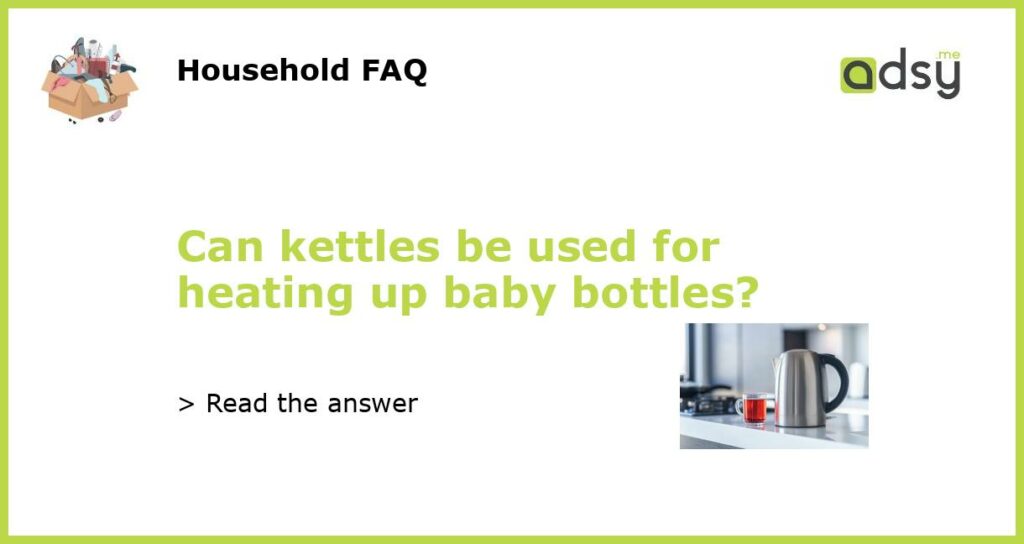Kettles for Heating Up Baby Bottles: A Safe and Convenient Option?
When it comes to heating up baby bottles, parents often look for quick and efficient methods. One question that frequently arises is whether kettles can be used for this purpose. In this article, we will explore whether kettles are a safe and convenient option for heating up baby bottles.
The Pros and Cons of Using a Kettle
Using a kettle to heat up baby bottles has both advantages and disadvantages. Let’s take a closer look at each:
Advantages:
1. Speed: Kettles heat water rapidly, allowing you to warm up a baby bottle in a matter of minutes. This is particularly beneficial for those moments when your little one is hungry and crying.
2. Convenience: Kettles are commonly found in households, making them a readily available option for heating up baby bottles. You don’t need any additional equipment or accessories, as a kettle is usually all that is required.
Disadvantages:
1. Temperature control: One of the main concerns when using a kettle is maintaining the ideal temperature for the baby’s bottle. Different formulas and liquids require specific temperatures to ensure they are safe for consumption. Kettles may not offer precise temperature control, making it more difficult to achieve the optimal warmth for your baby’s milk or formula.
2. Risk of burns: Kettles are designed to heat water to boiling temperatures, and the steam produced by boiling water can be dangerous. Accidental spills or splashes can result in burns, posing a risk to both the caregiver and the child.
How to Use a Kettle Safely for Heating Baby Bottles
If you decide to use a kettle to heat your baby’s bottles, there are some measures you can take to ensure safety:
Boil and then wait:
Boil the water in the kettle and then allow it to cool for a few minutes before using it to heat the bottle. This will decrease the risk of burns from hot water or steam.
Use a heatproof container:
Pour the hot water from the kettle into a heatproof container, such as a glass or ceramic mug, before placing the baby bottle inside. This will prevent direct contact between the bottle and the hot kettle, reducing the risk of burns.
Stir and test the temperature:
After heating the bottle, stir the contents thoroughly to ensure even distribution of the heat. Test the temperature of the milk or formula on the inside of your wrist before giving it to your baby. The liquid should be warm but not too hot, as excessive heat can scald your baby’s mouth or throat.
Alternative Methods for Heating Baby Bottles
If you are concerned about the potential risks associated with using a kettle, there are alternative methods you can consider:
Bottle warmers:
Bottle warmers are specifically designed to heat baby bottles and offer precise temperature control. Unlike kettles, they are equipped with features that allow you to set the desired temperature and maintain it throughout the warming process. Some bottle warmers even have timers and auto shut-off functions for added safety.
Warm water baths:
Another option is to place the baby bottle in a container of warm water. This method may take slightly longer than using a kettle or bottle warmer, but it provides a gentler and more controlled warmth. Remember to swirl or shake the bottle periodically to ensure even heating.
Kettles as an Option for Heating Baby Bottles
In conclusion, while kettles can be used to heat up baby bottles, they come with certain risks and limitations. The lack of precise temperature control and the potential for burns make them a less preferable option compared to dedicated bottle warmers or warm water baths. However, if you choose to use a kettle, following safety precautions such as boiling and waiting, using a heatproof container, and testing the temperature can help minimize the risks.






